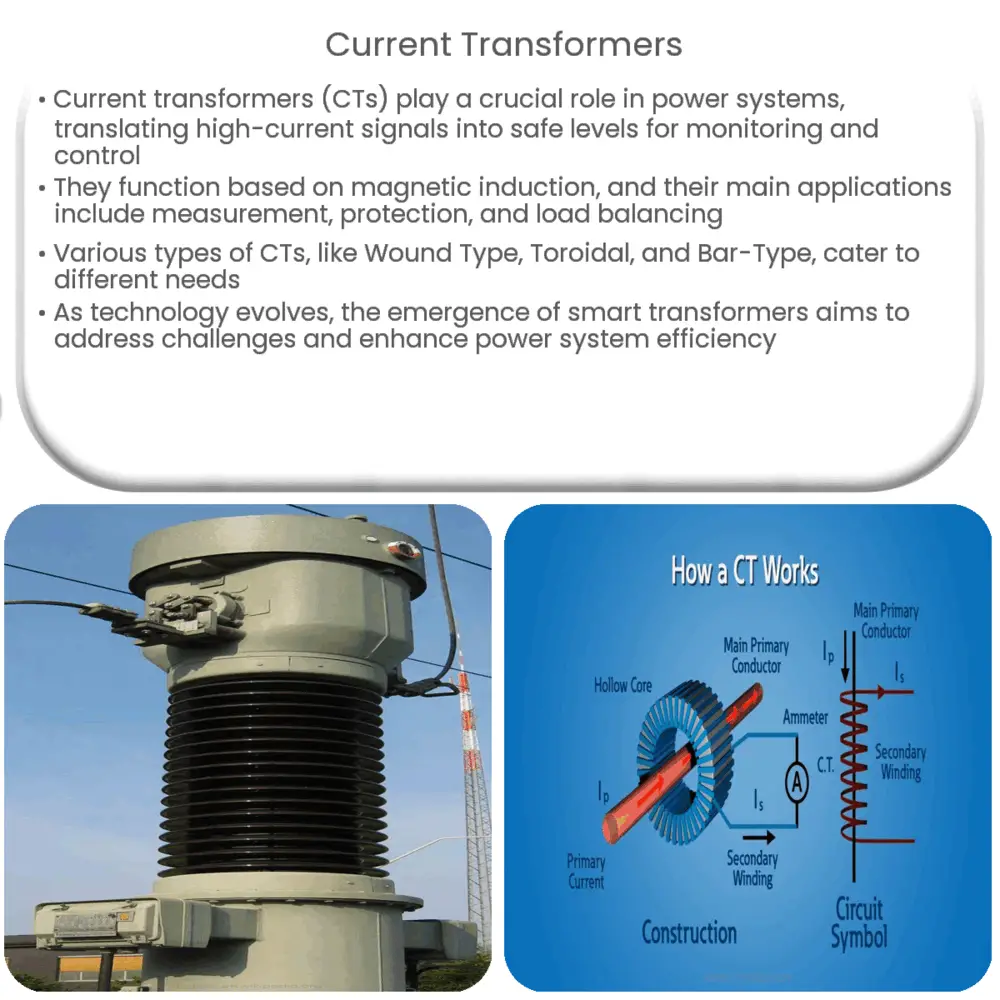Explore the principles, applications, types, and future of current transformers, the pivotal components in power systems.

Introduction to Current Transformers
Current transformers (CTs) play a pivotal role in the realm of power systems. Acting as a conduit for monitoring and controlling electrical energy, these components possess considerable utility and importance. In order to fully appreciate the value and operation of current transformers, it’s critical to understand the fundamental principles they’re built upon.
Principle of Operation
Current transformers operate on the principle of magnetic induction, much like their larger counterparts – power transformers. However, instead of transferring power, CTs translate high-current signals into lower, safe levels suitable for metering devices or protective relay equipment.
When an alternating current (AC) passes through the primary winding of a current transformer, it generates a magnetic field. This magnetic field then induces a current in the secondary winding, which can be precisely measured, given the known turns ratio of the transformer.
Applications of Current Transformers
CTs find extensive application across several fields. Let’s delve into a few key areas:
- Measurement: Current transformers help measure high voltage and high current circuits by translating them into manageable levels. This enables the safe monitoring and control of power flow, contributing to efficient grid operation.
- Protection: In power systems, protective relays ensure safety by disconnecting circuits when fault conditions occur. CTs provide the necessary input signals for these relays, allowing them to perform their job effectively.
- Load Balancing: CTs can also be used in power factor correction systems. By accurately measuring the load current, they aid in balancing the load across phases, thereby improving system efficiency.
Types of Current Transformers
Current transformers come in various types, each with its own unique characteristics and application scenarios:
- Wound Type CT: This type of transformer has a primary winding of more than one full turn physically wound around the core.
- Toroidal CT: The toroidal CT, also known as a ring-type transformer, has no primary winding but instead, the line carrying the current flowing in the network is threaded through a hole in the toroid.
- Bar-Type CT: Bar-type CTs are essentially a bar of suitable size and material forming an integral part of the transformer. They are used when a high level of insulation is required.
Current Transformers and Safety
Current transformers are instrumental in maintaining safety within electrical systems. Given the high voltages and currents involved, it’s essential to have a reliable means of reducing these quantities to safer levels for monitoring and control. This is where CTs come into play.
Key Parameters of Current Transformers
When selecting a current transformer for a specific application, there are several crucial parameters to consider:
- Rated Primary Current: This refers to the nominal value of the current that the transformer is designed to measure.
- Accuracy Class: This indicates the degree of error within the transformer’s output. Different applications require different levels of accuracy.
- Burden Rating: The burden of a current transformer describes the total impedance of the secondary circuit in VA (Volt-Ampere) that the CT could supply at the rated current and accuracy.
Installation and Maintenance
Proper installation and maintenance are vital to the operation of current transformers. For example, secondary circuits of a CT should never be opened while the primary is energized. This is due to the fact that an open secondary could lead to dangerously high voltages. CTs should be inspected regularly, checking for any signs of wear or damage and ensuring that all connections are tight.
Challenges and Future Directions
While current transformers offer numerous benefits, they also present certain challenges. For instance, their accuracy can be affected by factors like load impedance, phase shift, and the presence of harmonics in the electrical system. As technology advances, we’re seeing the development of smart transformers, designed to address these challenges and bring a new level of efficiency and accuracy to power systems.
Conclusion
In conclusion, current transformers serve as an indispensable tool in our power systems, allowing for effective measurement, protection, and load balancing in high voltage scenarios. Their various types, each tailored for specific applications, enable engineers to adapt to a wide range of environments and requirements. As we continue to innovate and tackle the challenges posed by these devices, the future of current transformers promises to be a journey of continual evolution and improvement, making our power systems safer and more efficient.

